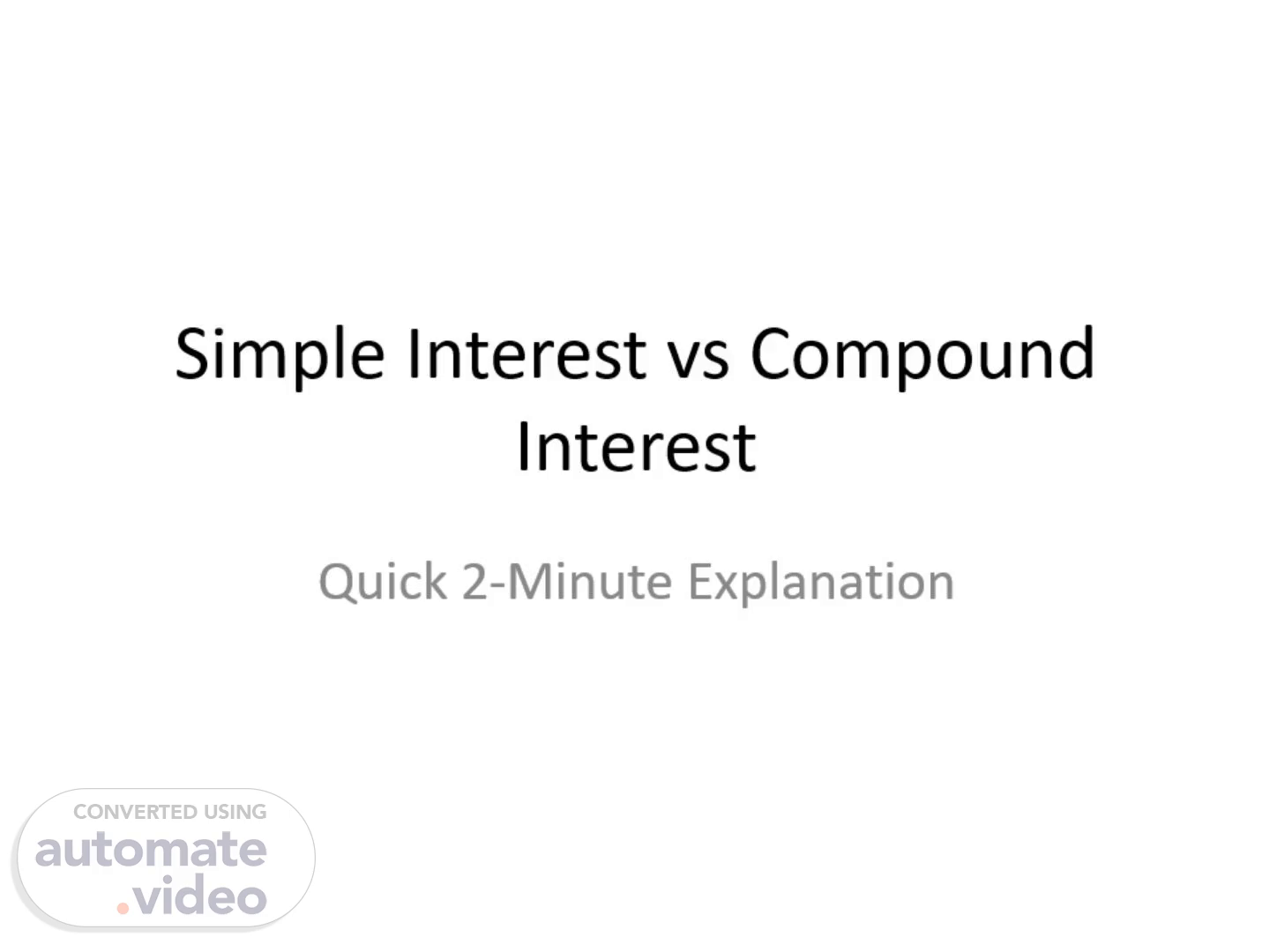Scene 1 (0s)
[Audio] Simple Interest vs Compound Interest Quick 2-Minute Explanation.
Scene 2 (1m 12s)
[Audio] Introduction Interest is the extra money paid for using borrowed money. Two common types: • Simple Interest (SI) • Compound Interest (CI).
Scene 3 (1m 29s)
[Audio] Simple Interest (SI) Formula: SI = (P × R × T) / 100 Example: Principal (P) = ₹1000 Rate (R) = 10% per year Time (T) = 2 years SI = 200.
Scene 4 (1m 55s)
[Audio] Compound Interest (CI) Formula: A = P(1 + R/100)^T Example: Principal (P) = ₹1000 Rate (R) = 10% per year Time (T) = 2 years Amount (A) = 1210 CI = 210.
Scene 5 (2m 19s)
[Audio] Difference Between SI and CI • SI is calculated only on the principal. • CI is calculated on principal + accumulated interest. • SI remains constant. • CI increases with time..
Scene 6 (2m 40s)
[Audio] Conclusion • Simple Interest is easy to calculate. • Compound Interest grows faster. • CI is commonly used in banking & investments. Thank You!.
